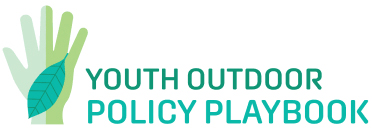
Policy Library
Policy Areas
Looking for solutions? Explore our issue areas on this page. We'll explain the key issues we address and provide real-world examples of policies that make a difference.
Overview
The Youth Outdoor Policy Playbook tracks new and exciting bipartisan outdoor policy ideas from across the United States covering outdoor equity & justice, environmental education & outdoor learning, outdoor health & wellbeing, and outdoor play.
Many of these issues overlap, so don’t hesitate to browse through all of them – you might be surprised to find a relevant solution in an unexpected place!
Outdoor Equity and Justice
One in three children today can’t reach a safe park or green space within a ten-minute walk of their home – often due to historical discrimination, like redlining, and underinvestment in low-income communities. Outdoors for all means solving historic and ongoing injustice.
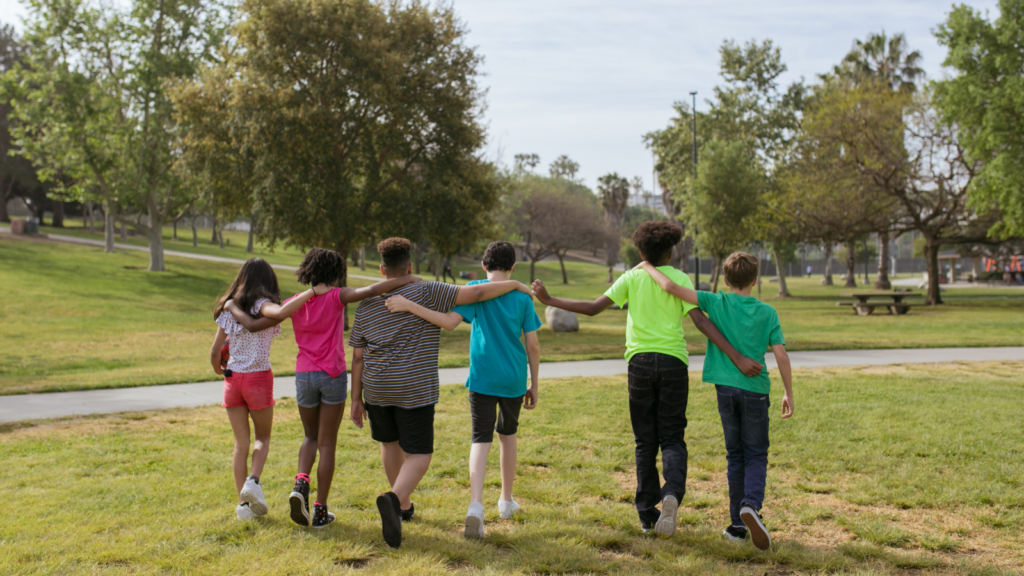
Funds and Scholarships
- Outdoor Equity Funds: New Mexico (SB 462), Colorado (HB21 1318), and California (AB 209) offer equity-focused grant programs helping Tribal nations, state agencies, local governments, community organizations, and schools create outdoor opportunities for all.
- No Child Left Inside: Washington (HB 1677) and Minnesota (HF 3348) offer need-based funding and resources designed to increase youth outdoor equity.
- Greenspace Equity Programs: Maryland’s (SB 923/HB 503) Greenspace Equity Program increases and improves greenspace in overburdened and underserved urban communities.
Removing Barriers and Building Bridges
- Identify & Incentivize Accessibility: Many public outdoor spaces remain inaccessible to disabled people, especially disabled youth. Colorado (HB23-1296) a created a task force to study the rights and needs of disabled people in state outdoor recreation, and Minnesota HB 2310 prioritizes funding disability-inclusive trails.
- Every Kid Outdoors & Youth Parks Passes: Many states honor the Every Kid Outdoors pass in state and local parks. Nevada (A.B. 385) independently offers free entry for fifth graders and their families into state and regional park systems. Oregon (ORS 390.124) offers free parks access for children in foster care.
- Free Military & Veteran Parks Passes: Children and families of veterans and active military personnel face unique barriers to spending time outdoors. Alabama (HB 58), Oklahoma (SB 1185), and Maine (LD 56/HP 31) offer free access to veteran and military personnel, and the National Parks offer free access to military and their dependents.
Transportation
- Public Transit to Parks: Transportation is one of the most significant barriers to outdoor recreation. Illinois (H.B.5277) is exploring a need-based Transit-to-Trails grant program to link public transportation to public outdoor recreation opportunities.
- Safe Bike Lanes: Washington (SB 5975) is investing $1.3 billion in non-motorist safety with bicycle-friendly federal funds, Tennessee (HB 685/SB 728) identifies roads endangering cyclists and pedestrians, and Maine (LD 1674) requires large construction projects to protect cyclists.
- Connect Existing Trails: Connecting existing trails can drastically increase equitable access and reach, and states with strategic trail plans will benefit most from new federal funding. Alabama (S.B.298) is strategically developing and connecting existing trails.
Outdoor and Environmental Learning
Young people deserve opportunities to learn in, thrive in, and appreciate the outdoors, so they can become informed and engaged champions for our natural resources and communities. Ensuring environmental literacy and education is integrated in all forms of education ensures students will have opportunities to learn about and care for the outdoors.
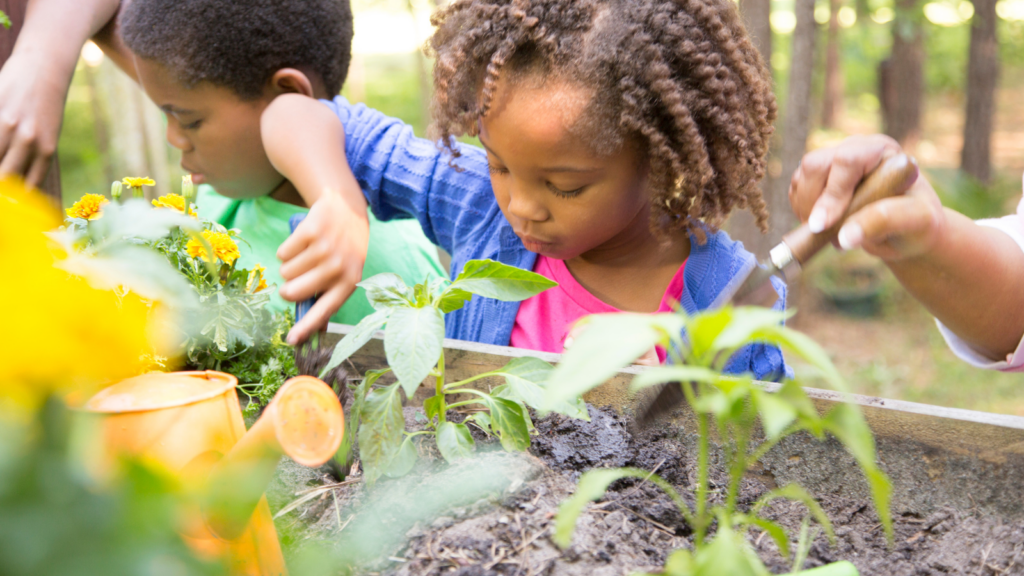
Early Childhood Education
- Outdoor Preschool Licensing: Licensing nature-based preschool and daycare centers make it possible to offer full-day programs and connect with state and federal programs to promote equitable access. Washington S.B.5151, Oregon H.B.2717, Maryland H.B.525 license or pilot licensing outdoor child care centers.
- Nature-Based Early Childhood Facility Infrastructure: Adding natural and design elements to the outdoor spaces of early childhood programs enables young children to be active, learn in nature, and develop motor skills. These elements include looping pathways, boulders, logs, edible gardens, and sustainable materials in and around buildings and playspaces. California CAL FIRE Green Schoolyards—Nonprofit Child Care Facility Grants and Grow Outdoors South Carolina both provide funding and technical assistance for creating nature-based and sustainable infrastructure at early childhood facilities.
Climate & Environmental Education
- Climate Curriculum: Understanding climate change can restore children’s excitement and interest in spending time outside and improves youth academic and work opportunities. Puerto Rico (R.S.854/R.C.S.455), Connecticut (HB 5506) and California (SB 720) mandate climate change education in state curriculum and provide resources to school districts.
- Experiential Learning Programs: Immersion in local outdoor industries and community resources offers unparalleled hands-on learning. Maine LD 1682 established a Sea and Farm to School Program connecting students with real-world educational opportunities and local food.
- Climate Resources for Teachers: Teachers often do not have adequate materials or resources to teach climate science. Washington (SB 6032) provides $3-4 million annually to schools and nonprofits to support environmental and climate science teachers; Maine (LD 1902/HP 1409) established a state environmental science coordinator position and professional development pilot program.
Time Outdoors in School
- Outdoor School for All: Overnight outdoor school programs offer unique opportunities for youth to build confidence and engage with nature. Washington (HB 2078) and Oregon (HB 489) created outdoor learning grant programs for public schools.
- Outdoor Recess: Recess can be up to 70% of a child’s daily physical activity and outdoor recess boosts academic, social, and physical wellness. However, one in five low income elementary school students receive no recess at all. Washington (SB 5257) requires schools to provide a minimum of 30 minutes of daily recess outdoors and discourages taking away recess as a punishment.
- Outdoor Recreation in Education: Bridging existing state education and recreation resources can multiply their impacts at little to no additional cost. Nevada’s (AB 164) Outdoor Education Advisory Working Group connects public schools to state outdoor recreation resources.
Green Schools & Living Schoolyards
- School Gardens: California (AB 1634) and Oregon (HB 2579) fund school garden education programs that connect youth to healthy, local food and meaningful hands-on learning.
- Plan for Resilience: California (AB 1642) considered integrating climate resilience in school facilities plans, including providing shade, low heat surfaces, and green schoolyards.
- Invest in Green School Savings: States could save nearly $4 billion annually by investing in green schools. Maryland (SB 383/HB 531) dedicates state funding to increase the number of green schools and annually evaluates the impact of these funds. Maine (LD 612) established a Green Schools Coordinator position to support school districts in planning and building green schools.
Outdoor Health & Wellbeing
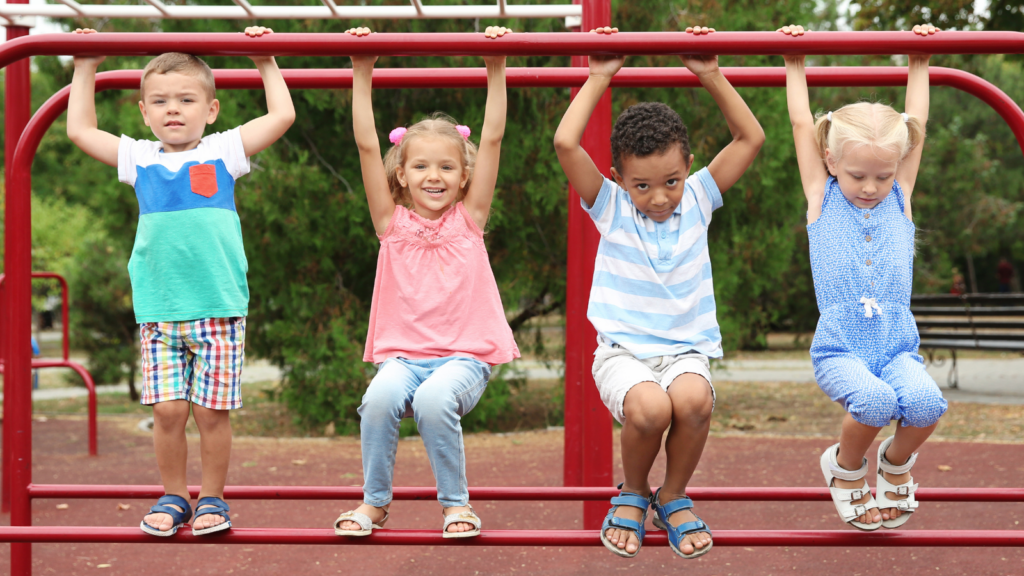
Nearly 60% of youth are so worried about climate change that it impacts their daily lives, but spending time outdoors reduces fear and anxiety about climate change and increases hope for hope the future. Time outdoors reduces stress, decreases sleep deprivation, and reduces symptoms of ADHD, PTSD, depression, and anxiety.
Outdoor Mental Health & Wellbeing
- Outdoors Rx / Outdoor-Based Therapy Programs: Washington’s successful Parks Rx pilot program (S.B.5292) and the new Illinois Outdoor Rx program (H.B.1526) provide guidance and funding to promote health through outdoor access.
- Prescribe A Park: Vermont and South Dakota empower healthcare providers to promote time outdoors by prescribing free park passes.
Healthy Childhood Initiatives
- Children’s Outdoor Bill of Rights: Many cities have enacted a Children’s Outdoor Bill of Rights to highlight the importance of children participating in and enjoying time outdoors. Illinois (HR 0011) maintains that every child should have the right and opportunity to play outside.
- Healthy Childhood Task Force: States increasingly recognize time outdoors as the key to healthy childhoods. Louisiana (S.R.84) established a task force to promote healthy childhoods with a special focus on time outdoors in and out of school.
Safety & Environmental Health
- Swimming & Water Recreation: Historic and ongoing discrimination in water recreation means children of color are up to twice as likely to experience drowning accidents. Maryland (HB 303) closed pool code loopholes that disproportionately endangered youth of color and California A.B.2124 would increase access to swimming lessons for children and their families.
- Extreme Heat in Schools: Schools are increasingly vulnerable to extreme weather and heat. Many state education agencies are exploring ways to protect children, and California SB 499 considered requiring schools to plan for extreme heat by providing shade, low heat surfaces, and greenery.
- Safe School Routes: AZ, CA, NJ, and IL passed laws help state departments of transportation administer federal Safer Routes to School funding.
Outdoor Neighborhoods & Play
Sometimes, all kids need to get outside is access to safe green spaces and outdoor opportunities and programs where they learn, live, and play.
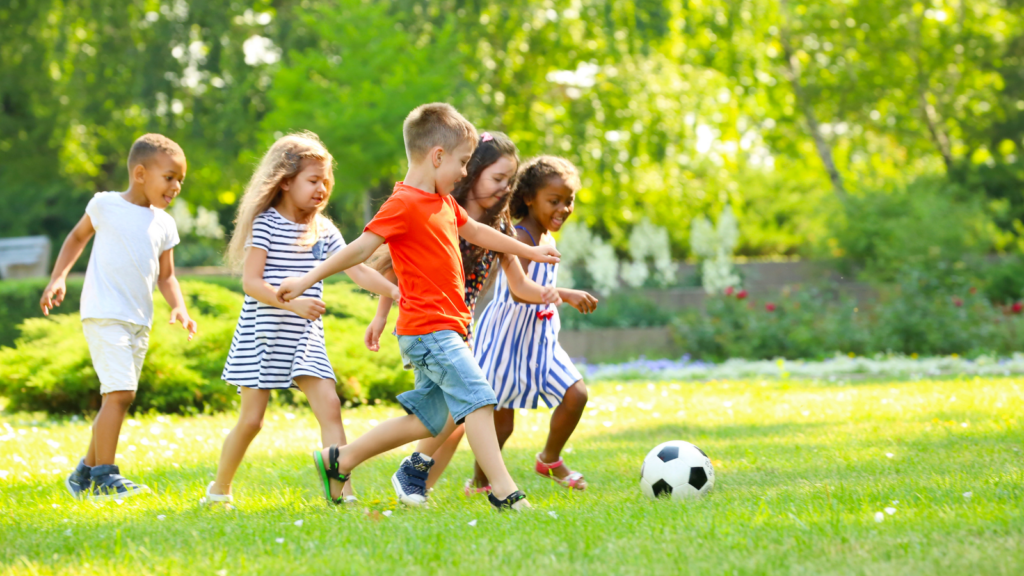
Homes, Neighborhoods, and Families
- Reasonable Independence to Play: Families, especially low income families and families of color, are sometimes punished for allowing children to safely play outside. Colorado (HB22-1090) clarifies it is not neglect and abuse to allow a child reasonable independence to play outside or walk to school.
- Gardening in Housing: Gardening is one of the most effective ways to connect youth to nature in nearly any setting. Illinois (H.B.3892) allows the housing development authority to create incentives for the affordable housing projects that incorporate urban and suburban gardening programs.
- Green Streets: Streets with plants, trees, and other green buffers can increase safety and offer meaningful nature opportunities nearly everywhere. New Jersey (NJS 1073) funds green streets with stormwater utility fees.
Create & Protect Public Green Space
- Schoolyards as Community Spaces: Opening up access to school outdoor spaces off-hours can drastically increase opportunities for youth and families, especially in urban and low-resource communities. Wisconsin (895.523) protects schools from liability associated with after-hours use of school grounds by the community.
- Require Public Green Space in Large Construction Projects: West Virginia (HB 3215) directs localities to require public green space, paths, trails, parks, playgrounds and recreation in large developments.
- Incentivize Green Space in Building Projects: Virginia (HB 1510) allows localities to reduce fees or streamline approval processes for projects that preserve, restore, or create public green space.
Local Youth & Parks Outreach
- Outdoor Engagement Leadership: North Carolina S.B.22 repurposed an existing Outdoor Heritage Council into a Youth Outdoor Engagement Council to expand youth outdoor access. States can also consider creating or expanding outdoor recreation offices.
- Stewardship Outreach Programs: Opportunities to appreciate nature and wildlife as a child increase lifelong outdoor engagement. New Mexico (SB 392) and Maryland (SB 327) offer youth outreach programs to foster interest in outdoor recreation, field sports, stewardship, and conservation.
- Parks Activities & Passport Programs: Offering families a little more guidance can better support parents and caregivers newly or recently spending time outdoors. New York (S 261) and Utah (HCR 4) created interactive park passports for youth with activities and small incentives to continue exploring state parks.
